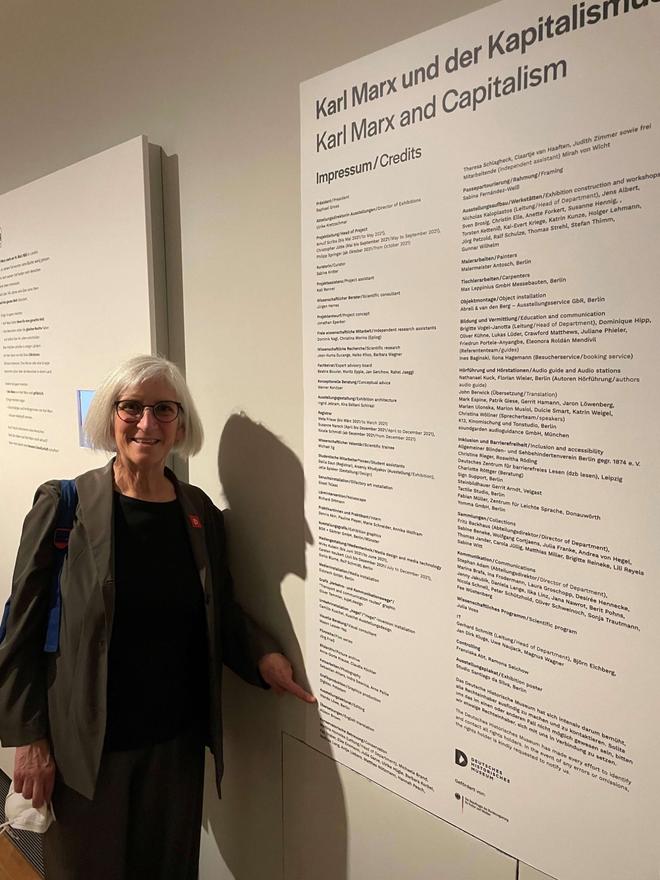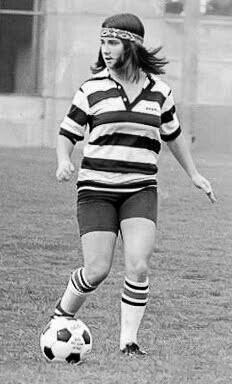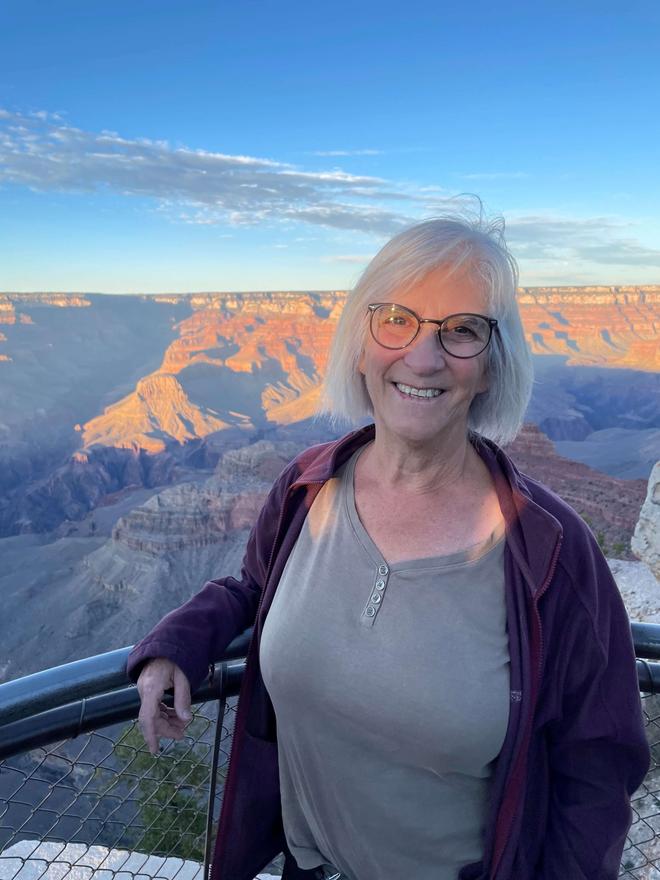ALLISON BROWN ’77 was in the Stanford band. She first played clarinet and for a while the tuba, ‘scattering” through halftime shows, as the band did, and painted “Boobs on Toobs” on her tuba bell.
“I’ve always been a very strong feminist,” she said from Berlin, her home since being granted a Fulbright Scholarship in 1982. “Reducing women to a body part is not something I would normally do, but that fit. It drew attention to women being out there, in a way that the Stanford band could relate to. I felt like it was OK.”
Brown started out majoring in chemistry because she felt it was important for women to be involved in contraception research. Eventually, she grew weary of chemistry and sat for a heart to heart with one of her professors, Carl Djerassi, the father of the birth control pill.
“It’s true, there have to be more women doing this,” Djerassi told her. “But it makes more sense to have women doing it who want to be there.”
Brown switched to German Studies, leading to a career as a translator of books and museum exhibitions in Germany. In the life she’s made there, she plays the clarinet in Berlin’s women’s concert band, organized a soccer team that won a Gay Games gold medal, and likes to run half-marathons, eager to attempt another for the first time since enduring a heart attack in 2019.
Brown arrived at Stanford in 1973 from Dix Hills, Long Island. Though a fan of the boys’ team at Half Hollow Hills High School, she never played soccer herself. She played fifth singles badminton; but “I wasn’t very good,” she said. “I was more in charge of the tea for the break.”
Allison’s mother, Tibby, was a civil service worker in family court and fought for equal pay in the courtroom. Barbara preceded sister Allison at Stanford and was active in the Women’s Center, a resource center, and in 1974 helped create a “Guide for Stanford Women,” a 40-page pamphlet with health, legal, and safety advice: “You’ve seen your advisor six times and he still doesn’t know your name … you’re three weeks late … you want to play lacrosse but there’s no women’s team … your bike has a flat tire … you need a job but the ads say ‘male preferred.’”
“She was the feminist before me,” Allison said.
To Allison, athletic ability wasn’t a prerequisite for her involvement in sports. When the boys of Branner Hall played pickup soccer in front of the dorm, Brown joined in. When Branner formed an intramural soccer team, Brown joined that too. Being the only female in the entire league wasn’t scary, it was perplexing.
“I thought, It would be more fun to play with women,” Brown recalled. “Why isn’t there a women’s team?”
Brown made a decision. Before she left Stanford, there would be a women’s soccer program and she was going to have something to do with it. Her superpower, after all, was persistence. That’s when the sophomore started hanging up flyers “on every women’s bathroom door on campus.”
Those who responded to a women's intramural team were a collection of undergrads, graduates, staff members, and student wives. Some, or perhaps most, didn’t even know the rules. Yet, come January, they would play full-field seven-a-side soccer against men.
Brown set up daily one-hour practice sessions. Sometimes, no one else showed, leaving Allison alone with a ball and her thoughts. Sometimes, it was just Brown and Eila Skinner, a junior, kicking a ball back and forth, or chasing it when they tried to shoot against each other without any actual goals.
“I can’t even believe it now that I think about it,” said Skinner, now chair of Stanford’s Department of Urology. “We were not very good. Oh man, they killed us. You definitely knew the intramural thing playing against the guys was not going to be a very good answer.”
Skinner was an exception to the lack-of-experience rule. She played on a girls’ team at her boarding school, Emma Willard in upstate New York, and as a freshman was “shocked” to learn Stanford didn’t have a women’s soccer team.
The team dubbed “Women’s Center,” though it had no connection with the center, opened with a 3-0 loss to the El Tigre eating club. The Stanford Daily enjoyed the novelty, and writer Pete Bhatia provided a lighthearted description of women playing in a men’s league that was viewed as condescending and sexist.
Brown responded quickly, calling Bhatia out in a lengthy letter to the editor signed by the entire team. Bhatia, later a 10-time Pulitzer Prize-winning newspaper editor, claimed Brown couldn’t take a joke. The team didn’t score all season and lost every match. But that wasn’t the point. It proved women were interested in playing soccer (and, in fact, there were many men’s teams that lost by more outrageous scores).
Brown knew they were on to something and talked Stanford men’s soccer coach Fred Priddle into teaching a beginning class for women. In the fall of 1975, Priddle saw enough promise to relay a message – Cal had challenged Stanford to a match.
With days to assemble a team, Brown checked old phone lists, made calls, and distributed even more leaflets. She found Maria Duryea playing pickup soccer with foreign professors at lunch time. Julie Zender and Lorraine Davis responded to an ad in the Daily. Others were plucked from P.E. classes because they looked “athletic.”
However, the biggest additions were Ellen Griep and Kathy Kelley, freshmen on the men’s freshmen team. With those two, Stanford women’s soccer was on its way.





